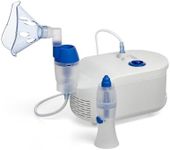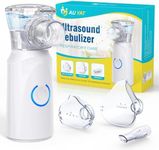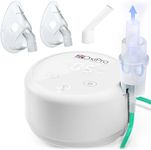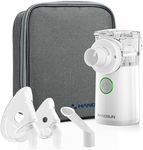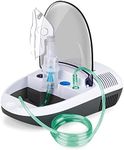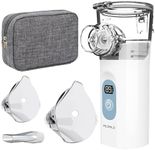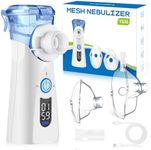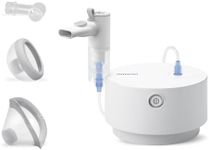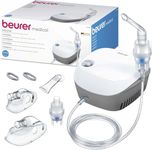Buying Guide for the Best Nebulizers
Choosing the right nebulizer is crucial for effective respiratory treatment. A nebulizer is a medical device that converts liquid medication into a fine mist, making it easier to inhale into the lungs. When selecting a nebulizer, consider factors such as the type of medication you need, the frequency of use, and your lifestyle. Understanding the key specifications will help you make an informed decision that best suits your health needs and personal preferences.Type of NebulizerNebulizers come in three main types: jet, ultrasonic, and mesh. Jet nebulizers are the most common and use compressed air to create a mist. They are generally reliable and cost-effective but can be noisy and less portable. Ultrasonic nebulizers use high-frequency vibrations to produce a mist and are quieter and faster but may not be suitable for all medications. Mesh nebulizers use a vibrating mesh to create a mist and are the most portable and quiet, but they can be more expensive. Choose a type based on your medication requirements, need for portability, and noise tolerance.
Particle SizeThe particle size of the mist produced by a nebulizer is crucial for effective treatment. It is measured in micrometers (µm) and determines how deeply the medication can penetrate into the lungs. A particle size of 1-5 µm is generally considered optimal for reaching the lower airways. If you have a condition that affects the lower respiratory tract, such as asthma or COPD, ensure the nebulizer produces particles within this range. For upper respiratory conditions, a larger particle size may be sufficient.
Nebulization RateThe nebulization rate indicates how quickly the nebulizer can convert liquid medication into mist, usually measured in milliliters per minute (ml/min). A higher rate means faster treatment times, which can be more convenient, especially for frequent use. Typical rates range from 0.2 to 0.7 ml/min. If you need quick treatments or have a busy schedule, opt for a nebulizer with a higher nebulization rate. However, ensure it is compatible with your medication type and dosage.
PortabilityPortability is an important factor if you need to use your nebulizer on the go. Portable nebulizers are typically smaller, lighter, and battery-operated, making them easy to carry and use outside the home. Consider your lifestyle and how often you travel or need to use the nebulizer away from a power source. If portability is a priority, look for compact models with rechargeable batteries or those that can be powered via USB.
Noise LevelThe noise level of a nebulizer can affect your comfort during use, especially if you need to use it frequently or in public settings. Noise levels are measured in decibels (dB), with lower numbers indicating quieter operation. Jet nebulizers tend to be noisier, while ultrasonic and mesh nebulizers are quieter. If you are sensitive to noise or plan to use the nebulizer in quiet environments, consider a model with a lower noise level.
Ease of CleaningRegular cleaning of your nebulizer is essential to prevent infections and ensure effective treatment. Some models have more parts and require more effort to clean, while others are designed for easy disassembly and cleaning. Consider how much time and effort you are willing to invest in maintenance. If you prefer a low-maintenance option, look for nebulizers with fewer parts or those that are dishwasher safe.
